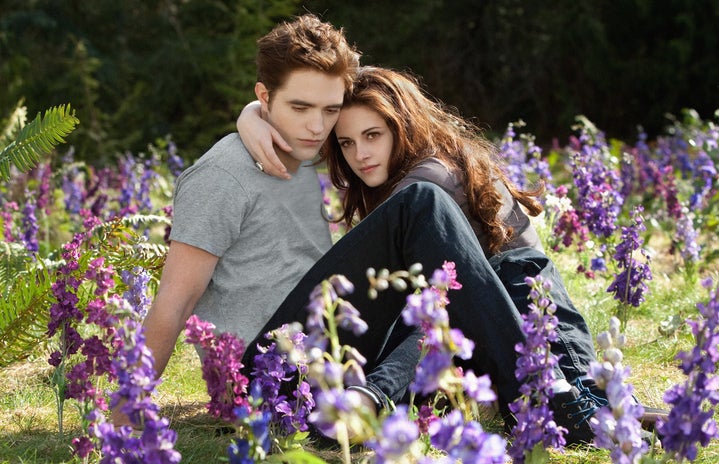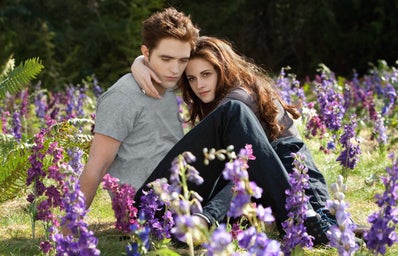During my senior year of high school, my English teacher challenged me to read all four “Twilight” novels with an open mind and review them in an unbiased manner. I took on the challenge as an extra credit assignment and over the course of six months, I read “Twilight”, “New Moon”, “Eclipse” and “Breaking Dawn.” By the time I got to the end of the saga, it was March 2020 and the rest of my senior year was spent in my room watching all of the “Twilight” movies. I possessed an (almost) complete trove of “Twilight” knowledge, and I was able to reason that all the ridicule I had seen over the years was utterly unnecessary. Particularly, as I dissected elements of the first movie, “Twilight,” it was apparent that the movie is a cinematic masterpiece and that it does not deserve the hate that it continually receives.
The movie paints a story of vampires, werewolves and love triangles, but beyond the surface lies a rather simple tale of a teenager struggling to discover her new identity. Bella is constantly evolving in the story and what really makes “Twilight” great is the relatability of Bella’s evolution and self-discovery throughout the four novels.
The characteristic trademark of the “Twilight” films is the pale blue filter laid over each shot of the movie. This filter, capturing the coldness that marks one’s adolescence, is director Catherine Hardwicke’s calling card. As a director, Hardwicke was specifically chosen for her realistic depictions of teen life, problems and emotions. She has even stated, “I care about difficult emotional moments and I want to be there for those moments and not cut away.” In “Twilight”, Hardwicke is able to capture the complexities of Bella’s character. Her mother moving away, adjusting to a completely new town and trying to fit in are only some of Bella’s troubles, but Hardwicke weaves in these difficulties flawlessly with Bella’s struggle to connect with the ever-elusive Edward.
Among the ten highest-grossing films of 2008 (can you believe it’s been 15 years since “Twilight” came out?), “Twilight” ranked 8th, and was the only film in the top ten to be directed by a female director. Hardwicke was able to stand out amongst Christopher Nolan, Woody Allen and even Steven Speilberg as an accomplished director with her own style and voice.
Hardwicke’s emphasis on the theme of teen angst is shown by more than just her use of lighting in the movie. As fall rolls around each year, the “Twilight” soundtrack is queued up again by every adult teenager and we watch as the season slips past to the tune of Bon Iver. The amalgamation of sounds and emotions that make up the soundtrack perfectly sums up a 2000s teenager’s iPod shuffle queue. Radiohead, Muse and Paramore are just some of the big names on the soundtrack.
While “Twilight” has endured criticism for its odd storyline, sometimes poor acting and the Renesmee doll, it truly does stand out as a catalyst for the vampire revolution that swept Hollywood. The country was split between Team Edward and Team Jacob, and studios were rushing to spit out vampire-themed movies to the point where there’s an entire Wikipedia page dedicated to vampire movies.
It is undeniable that “Twilight” ignited a cultural domino effect, but why? While I can’t speak for the entire audience of the movie, I can personally say that “Twilight” was my first true look at romance. Seeing Bella, an ordinary high school student, be pined for by two heartthrobs simply changed my brain chemistry. I was fascinated by how devoted Edward and Bella were to each other, and at the time, that type of love was a rare sighting in my day to day interactions as a senior in high school. Beyond her external relationships with Edward and Jacob, witnessing Bella’s introspection as she navigates her new life in Forks, Washington is a universal experience as people stumble through their adolescence trying to figure out their new selves. Watching these relationships morph throughout the saga was what had me hooked and in combination with the aforementioned factors, allowed “Twilight” to stay a cultural sensation.
Ultimately, the success of “Twilight” is not due to some secret ingredient that was transplanted from movie to movie to create blockbuster hits. The combination of a good director with a theme that matches the tone of Stephanie Meyers’ books and a nostalgic soundtrack created the foundation for a cinematic masterpiece, but what truly makes “Twilight” stand the test of time is how relatable Bella is. Of course, I was not falling in love with vampires at seventeen, but we’ve all had to muddle through complicated relationships to find ourselves at the other end. So hopefully, this fall, everyone will be able to rewatch “Twilight” and truly appreciate the aesthetic, cringy writing and nostalgia that makes it a true testament to 2000s teen angst.


